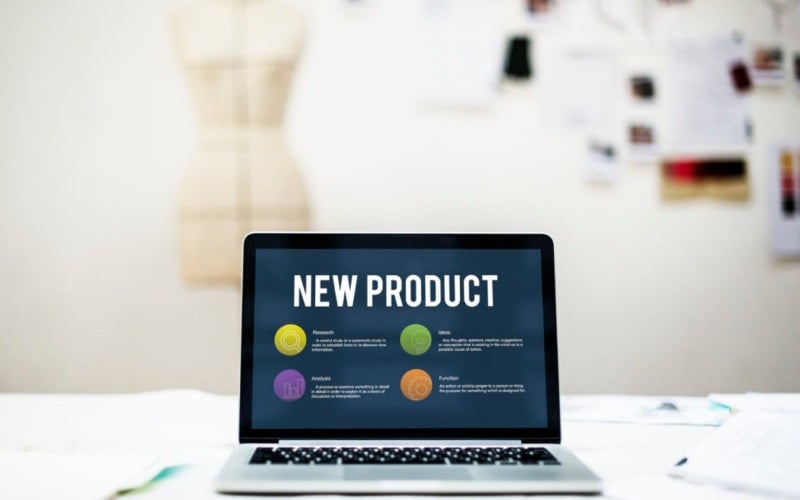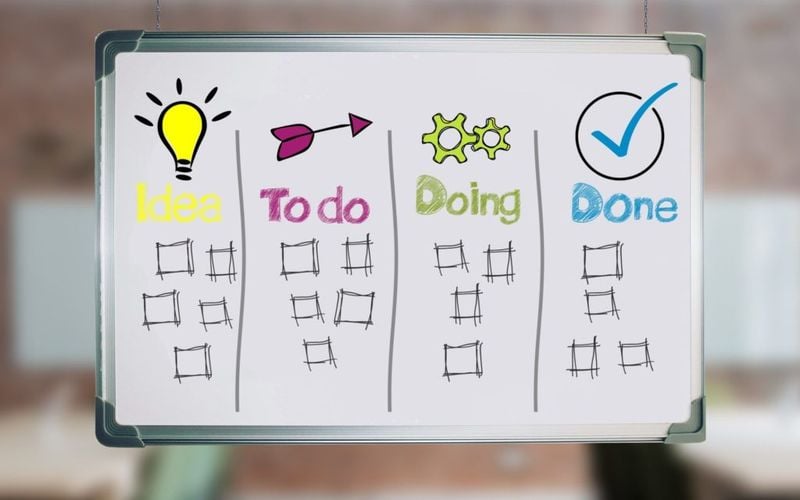MVP vs MLP: Insights for Product Innovators
You've probably encountered the terms "minimum viable product" (MVP) and "minimum lovable product" (MLP) if you're involved in product development. But what do they really mean, and why should you care?

An MVP is a version of a product that includes only the essential features necessary to validate key assumptions and test the market with minimal resources. The goal is to quickly gather feedback from early adopters, enabling teams to learn and iterate without over-investing in features that may not resonate with users.
For example, an MVP note-taking app might only include basic functionalities like creating and editing notes, postponing additional features like sharing and reminders for future releases.
In contrast, an MLP focuses on creating an emotional connection with users, even if it requires more time and resources. The goal is to design a product that not only meets user needs but also delights them through thoughtful design and engaging experiences.
An MLP note app would retain core functionalities but emphasize aesthetics and user engagement, incorporating elements like fun animations and playful instructions.
So, while MVPs aim to test the viability of a concept quickly, MLPs strive to cultivate a deeper connection with users from the outset.
The Core Differences: MVP vs MLP
On the outside MVP and MLP may seem similar—both are early versions of a product. But under the hood, they target different things.
What's Essential vs. What's Delightful?
MVPs focus on must-have features. These are the basics needed to fix a main customer problem.
For a photo sharing app, must-haves might be:
- Uploading pics
- Adding captions
- Viewing/liking others' photos
With an MLP, you go beyond functional to include emotional features. These excite users in memorable ways.
Our photo app MLP could have:
- Special filters and effects
- Playful stickers for pics
- Easy sharing across platforms
So MVPs build the minimum usable house. MLPs make it amazing with decor.
Functionality vs. Emotional Connection
With MVPs, user experience has traditionally taken a backseat to speed. The focus is to get a basic version up and running quickly, but there's an emerging consensus that even MVPs should consider user experience to some extent.
A poorly designed MVP can lead to negative user feedback that hinders future iterations and can impact overall product perception.
The MVP photo app would skip fancy design for fast building. The interface might be plain or clunky, but it’s crucial to ensure it’s at least intuitive enough for users to navigate.
MLP development is more art than race. The goal is an experience users love.
Our photo sharing MLP would have smooth, intuitive flows and great visuals. Each interaction is thoughtful and fun.
Speed vs. Quality
MVPs go from idea to launch in weeks or months. Testing quickly is key.
Our photo app MVP could realistically hit beta in just 6-8 weeks.
MLP timelines are usually less rushed and can take several months to complete. Perfecting the experience takes patience.
Creating a lovable photo sharing MLP may take 6+ months. But the result earns loyal users.
So MVPs race to test the concept while MLPs take time crafting a product users enjoy long-term.
Why MVP and MLP Matter
MVP and MLP aren't just buzzwords. They're powerful strategies with real benefits. Picking the right one unlocks growth.
When to Choose MVP: Fast Testing
Launching an MVP first is great when you need answers ASAP. Testing key assumptions early reduces risk.
Good uses include:
- Validating a risky/unproven idea
- Checking tech feasibility
- Gauging initial demand
- Getting feedback from early users
With our photo app, an MVP lets us quickly see if users even want a new platform before over-investing. We can learn and adjust fast based on real-world input.
MVPs prevent expensive missteps later. You can fail fast and cheap, changing things instead of building stuff no one wants.
When to Choose MLP: Making Connections
MLP makes more sense once basics are tested. When you know users want your core product, start crafting a memorable experience.
Some scenarios where leading with an MLP pays off:
- Building a strong brand
- Creating buzz
- Hooking users with awesome UX
- Developing loyalty
For our new photo app, an MLP helps us go beyond a plain tool to something users love. We can build community and brand, not just fill a temporary need.
The time put into an MLP makes an emotional link between users and product. But it requires vision, patience, and resources.
Building an MVP: How-To Guide
Crafting a successful MVP takes strategic planning and focus. Follow these steps:
Identifying Target Users and Problems
Everything flows from understanding your users. Create 2-3 personas that capture your target audience.
Outline their goals, issues, and needs. This focus ensures your MVP solves real problems for real people.
Our photo sharing MVP might target:
- Teens who want an easier way to share moments with friends
- Parents who want a family-friendly platform
Key Features: What to Include
With target users and needs mapped out, prioritize the must-have features to validate your riskiest assumptions fast.
Use things like user interviews and story mapping to separate essentials from nice-to-haves. Stay ruthlessly focused on the bare minimum viable product.
For the photo MVP, top features would be:
- Uploading/posting pics
- Commenting and liking
- Hashtag search
Extra stuff like notifications can wait.
Testing and Feedback: Gathering Insights
Don't disappear down a rabbit hole. Get your MVP prototype to users immediately to validate assumptions.
Use low-fidelity prototyping tools to mock up key flows quickly. Catch issues before full development.
Once live, gather direct user feedback through interviews and observation. Keep tweaking based on insights to ensure product-market fit.
This tight feedback loop is the magic of MVPs. Instead of guessing what users want, you can course correct based on real data.
Our photo sharing MVP gives us a testable product to put in front of users fast. Their input steers the ship.
MVPs aren't about perfection. They're about learning.
Creating an MLP: Step-by-Step Guide
While MVPs are quick sprints, MLPs take time and care. But the payoff can be huge in user loyalty. Here's how to craft an irresistible one:
In-Depth User Research
To build an emotional bond, you need deep insight into your users—not just practical needs but hopes, fears, and dreams.
Field visits revealing these hidden truths. Immerse yourself in your users' worldview.
Our photo app MLP research could involve joining teens at events to observe how they interact and capture memories.
Designing for Delight: UI/UX Best Practices
With insights from research, craft an experience that resonates. Thoughtful UI/UX has a big impact.
- Use subtle animations and transitions
- Write warm, conversational instructions
- Add playful elements and details
Create something users take joy and pride in using. Make each interaction feel human-focused.
Our photo MLP might have a fun retro interface with vintage filters and stickers. Sharing is fast and seamless.
Feedback Loops: Enhancing User Experience
Keep improving through regular user input. Continuously gather feedback and observe usage.
Use A/B tests, interviews, analytics, and support tickets to uncover pain points. Then refine the design based on insights.
For our photo MLP, we'd keep tweaking based on user reactions, not assumptions. The goal is exceeding expectations always.
Done right, an MLP becomes a beloved product that's hard to live without. Plan for the long-haul, not just launch day.
Risk Management: Challenges of MVP and MLP
MVP and MLP aren't without risks. Understanding common pitfalls allows you to avoid them.
Common Risks With MVPs
The quest to validate ideas quickly with an MVP has some hazards:
- Losing vision: Obsessing over MVP data can make you lose sight of big picture product goals. Don't just build whatever metrics say—maintain vision.
- No emotional connection: Strictly functional MVPs fail to build brand loyalty and stickiness. Don't completely neglect emotional engagement.
- User fatigue: Frequent iterations and constant changes can overwhelm users, leading to frustration and disengagement. It's important to balance rapid development with thoughtful updates.
- Technical debt: Quick and dirty MVP code can bog teams down later. Refactor it periodically.
- Misreading feedback: User feedback provides clues, not absolute truths. Don't over-index on subjective opinions.
- Endless changes: The flipside of fast learning is constant iteration. At some point, finishing beats iterating.
Our photo sharing MVP helps rapidly validate concepts, but we must avoid analysis paralysis. Ship improvements while also moving the broader vision forward.
Risks With MLPs: Investment vs. Reward
The steady MLP path has different risks:
- Overestimating demand: Empathy for users can cloud objective market analysis. Ensure real demand exists first.
- Feature creep: In pursuing user delight, it's easy to get seduced by cool but unnecessary features, losing focus on the core jobs-to-be-done.
- Team alignment challenges: Developing an MLP requires a unified vision among team members. Misalignment can lead to inconsistent user experiences and wasted resources.
- Overspending: Perfecting an MLP demands substantial resources. Make sure you aren't bleeding money or neglecting other projects.
Measuring Success: Metrics for MVP and MLP
How can you objectively evaluate your MVP or MLP's performance? The right key performance indicators (KPIs) highlight progress.
Key Metrics for MVP
Since speed and learning are priorities, good MVP metrics include:
- Iteration velocity: How quickly can you release and gather feedback on new MVP versions? Faster is better.
- Qualitative insights: Are user interviews and feedback driving meaningful product changes? Progress depends on taking action on insights, not just collecting data.
- Quantitative validations: Are you proving or disproving key assumptions through usage data? Even invalidated hypotheses are wins.
- Feature pruning: Does each new iteration strip away non-essential features through testing and prioritization? Stay lean.
For our photo MVP, these metrics ensure we're learning and adapting quickly to find product-market fit.
Success Metrics for MLP: Beyond Functionality
The MLP's focus on crafting an emotional connection calls for experiential metrics like:
-
Net Promoter Score (NPS): Helps measure user loyalty and satisfaction. High NPS signals you've created something people love.
-
User retention: Are people actively using your product long-term? Growing retention equals growing engagement.
-
Reviews/ratings: What do users say about their experience? Favorable reviews indicate an emotional resonance.
-
"Aha" moments: Are there clear points where users delight in certain interactions? Moments of joy boost engagement.
-
Social sharing: Do users proudly share the product with others? Organic social buzz signals you've created something remarkable.
For our photo app MLP, these metrics confirm we've nailed crafting a truly lovable, sticky product—not just a functional one.
The Future of MVP and MLP
Like any methodology, MVP and MLP will evolve as new practices emerge. Here are some likely advances:
Emerging Practices
- Hybrid approaches: Blending MVP and MLP elements allows greater agility plus emotional engagement.
- Lower-fidelity MLPs: Advances in prototyping allow testing emotional resonance earlier with interactive wireframes.
- Broader design thinking: There's a growing focus on systems-thinking and environmental design, not just individual products.
We may integrate some hybrid MVP/MLP features in our photo app to validate ideas faster while delighting users.
The Role of Technology
New tech tools and capabilities enable MVP and MLP innovations like:
- Faster prototyping: No-code tools allow interactive prototypes in days rather than weeks.
- Better virtual testing: AR/VR allows more realistic user testing without physical prototypes.
- Real-time data: Telemetry tools provide instant user feedback to improve iterations.
Advancing tech gives our photo sharing MVP increased speed and quality with less effort. Capabilities will only grow.
The future looks bright as new practices and tools enhance how teams deliver lovable products efficiently.
Final Thoughts
MVPs and MLPs aren't one-size-fits-all solutions. When applied strategically, both can supercharge product development and drive growth.
Ultimately, users care about the value and experience your product provides, not the internal processes behind it. By leveraging MVPs and MLPs at the right times, you can create products that not only meet user needs but also foster loyalty.
Balancing speed with quality can be challenging, but keeping users at the center of your development process will guide you to success. They are the true north of product development.
Stay nimble and creative in crafting products that users love, and the results will follow.





